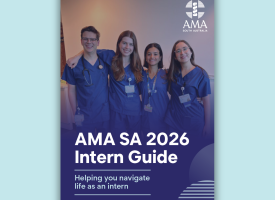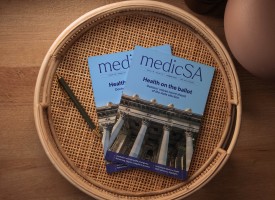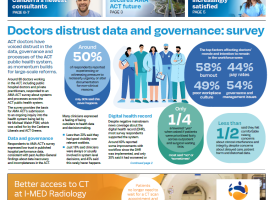Are southern Tasmania's private maternity services the canary in the private insurance coal mine?
The Australian Medical Association (AMA) acknowledges that the current landscape surrounding maternity services is dynamic.

We want to reassure the public that specialists are working closely with Calvary Lenah Valley Hospital to ensure a smooth and efficient transition as they ramp up from 300 deliveries to over 900 deliveries per year to compensate for the loss of the Healthscope Hobart Private Maternity Service.
Calvary's decision to enhance its services in response to Healthscope's announcement of yet another maternity unit closure is commendable, given the ongoing financial challenges facing private hospitals.
While Tasmania's private maternity services play a crucial role for families, urgent reforms and proper funding are essential.
It's critical we get this right to ensure high-quality maternity care is available for Tasmanian families.
Doctors are dedicated to providing excellent, comprehensive medical care, delivered by skilled obstetricians, paediatricians, and anaesthetists, ensuring the highest standards of safety and service.
As an anaesthetist involved in numerous caesarean procedures, I understand the vital importance of private maternity services and the necessity to support staff during this transition.
In the past Calvary has successfully managed over 1,200 deliveries per year, and the AMA is confident that the specialist workforce needed to sustain and expand this capacity will be in place. However, there are several critical elements that must be addressed to ensure the success of this transition.
Key areas for action.
1. Federal Government Funding:
The Federal government must deliver the promised $6 million funding to Tasmania before entering caretaker mode. This funding is essential for Calvary to begin the necessary infrastructure upgrades and systems to accommodate the increase in deliveries from 300 to 900 annually and for the state government to prepare for any increase in demand for public maternity services.
2. Safe Transition of Maternity Services:
We need all relevant parties to work together to ensure a safe and orderly transition of maternity services. This process must be carefully mapped out and agreed upon. The movement of midwives from Healthscope to Calvary is a critical part of this transition, and the AMA expects Healthscope to act responsibly in this matter, prioritising the well-being of midwives and patients alike.
3. Patient Rebates:
There are significant gaps in the current patient rebate system that need to be urgently addressed by both major Federal parties as we go into a federal election.
Currently, there is no rebate for a paediatrician’s attendance at an elective or emergency caesarean section, and patients are forced to foot the bill of the total cost of care for their newborn unless the baby is admitted to a special care nursery for post birth treatment and monitoring, where a small MBS rebate is applicable.
The rebate for obstetric management is only around 10% of what the government has costed, nor does it cover the costs for the management of Australian Defence Force (ADF) patients who receive a higher rebate.
The Federal Government needs to ensure that Medicare rebates for patients are indexed to the health Consumer Price Index (CPI), which they have not yet done.
4. Funding for Maternity Services:
The AMA calls for a national comprehensive review of how maternity services are funded:
• Obstetric cover should be included in all hospital insurance policies. If private health insurance policies can be upgraded from bronze to gold to ensure patient cover for mental health plans without a 12-month delay clause, similar provisions should be available for obstetrics.
• The weighting and payment structures for deliveries in private hospitals need to be reviewed to ensure fairness and adequacy.
• The current policy that prevents newborns from being admitted immediately after delivery, which in turn limits access to patient rebates for paediatric services, should be revisited.
5. Transparent discussions with health insurers:
We need transparent discussions with health insurers regarding funding models. This includes exploring whether a "hotel hospital" model should be considered in Tasmania to improve the provision and funding of maternity services.
6. Mother-Baby Unit:
It is critical that the new mother-baby unit is purpose-built to meet the growing and projected demand for maternity services ensuring optimal care and support. We need to be having discussion on location, staffing and resourcing this essential service.
7. Medical Indemnity Insurance:
The AMA calls on the government and medical indemnity insurance providers to review the risk equalisation strategy and rules around medical defence indemnity costs for obstetricians. Currently, obstetrics is excluded from these arrangements, and this policy needs to be reassessed to ensure that obstetricians are adequately supported in their work.
The AMA is committed to advocating for the necessary changes to ensure that maternity services in Tasmania meet the needs of the community. We will continue to work alongside Calvary and all relevant stakeholders to achieve these objectives and maintain the highest standards of care for all patients.>>>ENDS.



